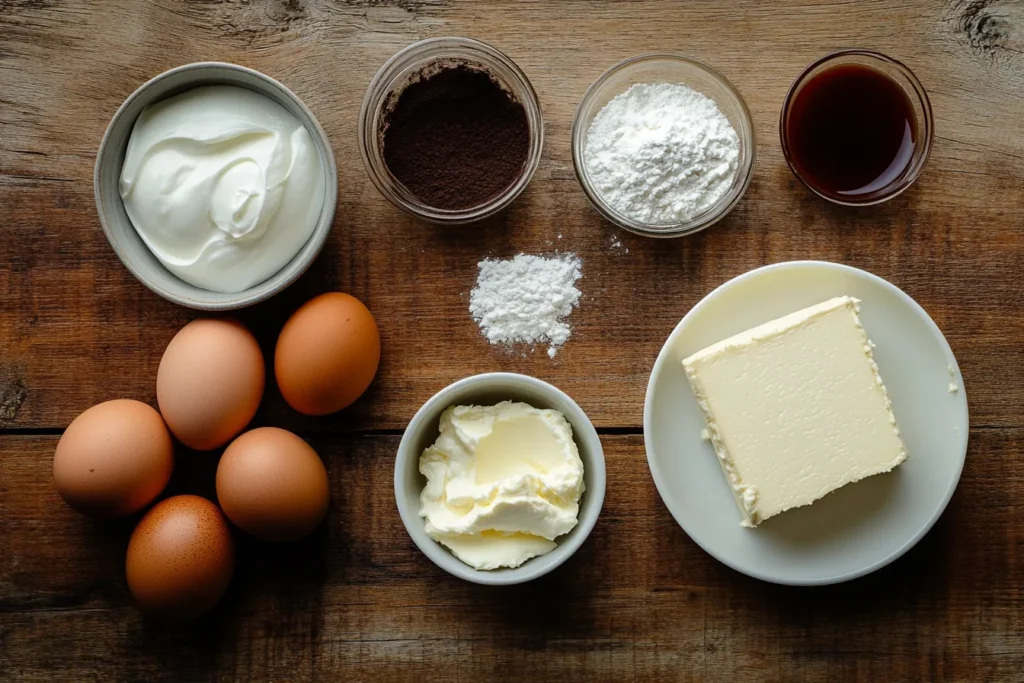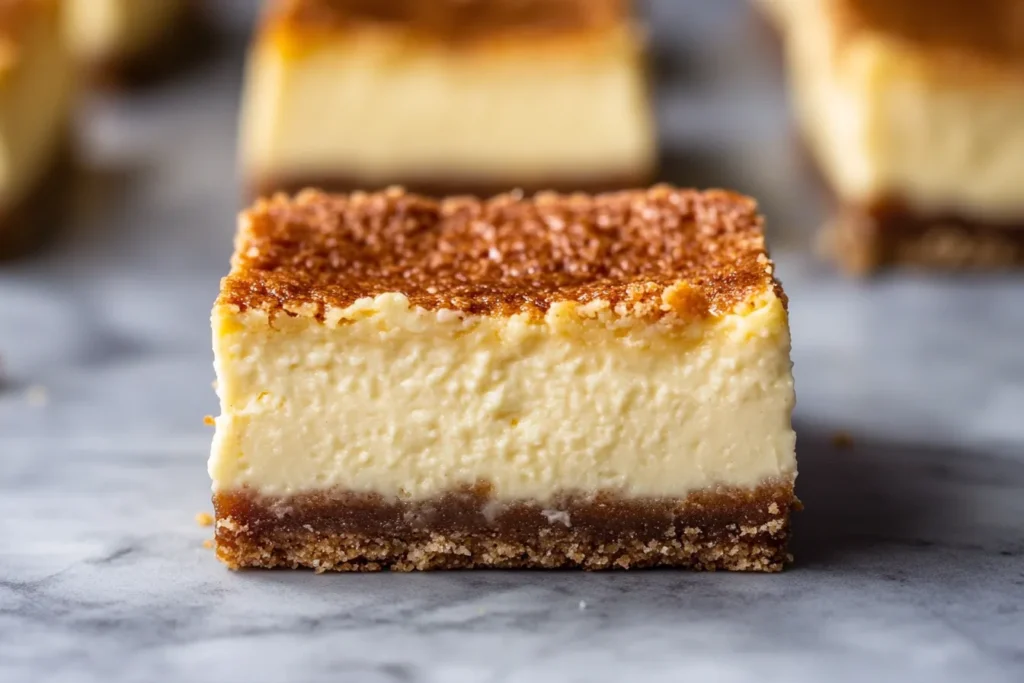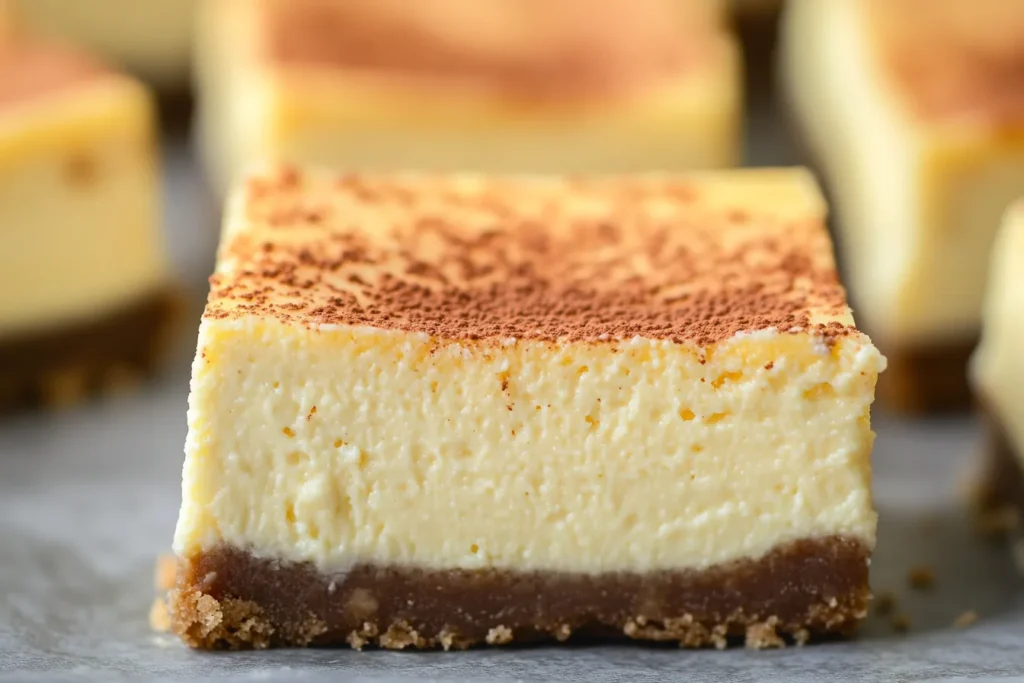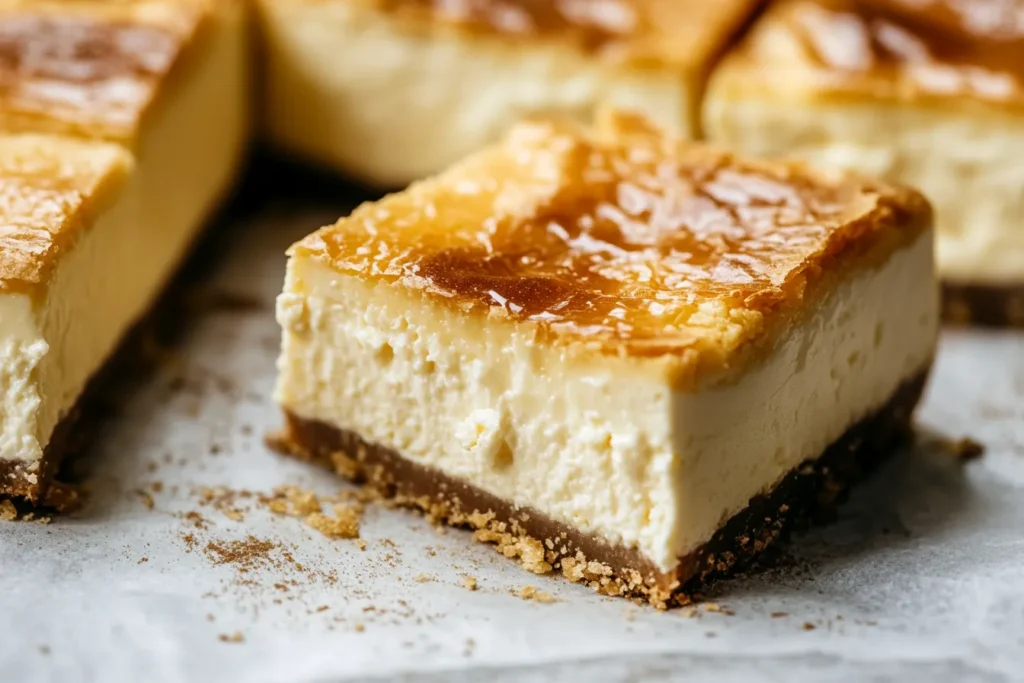Table of Contents
Why did my cheesecake bars crack? It’s a question that has plagued bakers for generations, turning what should be a delightful dessert experience into a source of frustration. Understanding the reasons behind these cracks is the first step to achieving flawless, smooth-topped cheesecake bars every time.
Understanding the Culprits Behind Cracked Cheesecake Bars
Cheesecake, in all its forms, is a delicate balance of ingredients and technique. Cracking often stems from issues related to moisture, temperature, and mixing. Let’s explore these common causes in more detail (Why did my cheesecake bars crack?).
The Temperature Tango: Oven Heat and Cooling
One of the most frequent reasons for cracked cheesecake bars is rapid temperature change. Think of it like this: the delicate proteins in the cheesecake are expanding and contracting. If the difference between the oven temperature and the cooling environment is too great, the top can crack.

Baking at too high a temperature can cause the cheesecake to puff up quickly, leading to cracks as it cools and deflates. Conversely, opening the oven door frequently during baking can create temperature fluctuations that contribute to cracking. Slow and steady wins the race (Why did my cheesecake bars crack?).
The cooling process is equally important. A rapid cool-down can shock the cheesecake, causing it to contract unevenly. A gradual cooling period allows the internal structure to stabilize.
Moisture Mayhem: The Role of Humidity
Humidity plays a significant role in the texture of cheesecake. Baking in a dry environment can cause the surface of the cheesecake to dry out too quickly, leading to cracks. Conversely, baking in an overly humid environment can affect the cheesecake’s ability to set properly.
A water bath helps maintain a consistent level of humidity in the oven. The steam prevents the top of the cheesecake from drying out and cracking (Why did my cheesecake bars crack?).
The Mixing Mishap: Overmixing and Air Bubbles
Overmixing the cheesecake batter incorporates too much air. These air bubbles expand during baking and can cause the cheesecake to rise excessively. As it cools, the air escapes, and the cheesecake collapses, resulting in cracks.
Mixing at a low speed and only until the ingredients are just combined is crucial. This minimizes air incorporation and helps create a smooth, crack-free cheesecake (Why did my cheesecake bars crack?).
Ingredient Imbalance: Ratios and Quality
The ratio of ingredients can significantly affect the texture and stability of cheesecake bars. Too much sugar can weaken the structure, while too little fat can make it dry and prone to cracking.
Using high-quality ingredients, especially cream cheese, can also make a difference. Cream cheese with a higher fat content tends to produce a smoother, richer cheesecake that is less likely to crack (Why did my cheesecake bars crack?).
9 Secrets to Avoiding Cracked Cheesecake Bars
Now that we’ve identified the common causes, let’s dive into 9 actionable secrets to prevent your cheesecake bars from cracking.
Secret 1: Master the Water Bath Technique
Baking your cheesecake bars in a water bath is the single most effective way to prevent cracking. The water bath creates a humid environment in the oven, which helps the cheesecake bake evenly and prevents the surface from drying out.
To create a water bath, wrap the bottom of your springform pan in heavy-duty aluminum foil to prevent water from seeping in. Place the wrapped pan inside a larger baking pan and add hot water to the outer pan, reaching about halfway up the sides of the springform pan.
Secret 2: Embrace Low and Slow Baking
Baking at a lower temperature for a longer period helps the cheesecake bake more evenly and prevents it from puffing up too quickly. A temperature of 300-325°F (150-160°C) is generally ideal.
Monitor the internal temperature of the cheesecake with a thermometer. It’s ready when the center jiggles slightly but the edges are set (Why did my cheesecake bars crack?).
Secret 3: The Art of Gentle Mixing
Avoid overmixing the cheesecake batter at all costs. Overmixing incorporates too much air, leading to cracks. Mix the ingredients on low speed until they are just combined.
Scrape down the sides of the bowl frequently to ensure that all ingredients are evenly incorporated.
Secret 4: Gradual Cooling is Key
Once the cheesecake bars are baked, turn off the oven and prop the door open slightly. Allow the cheesecake to cool in the oven for about an hour. This gradual cooling process helps prevent cracking (Why did my cheesecake bars crack?).

After the hour, remove the cheesecake from the oven and let it cool completely at room temperature before refrigerating.
Secret 5: Control the Humidity
If you live in a particularly dry climate, consider adding a pan of hot water to the bottom rack of your oven during baking, even if you are already using a water bath. This will further increase the humidity and help prevent cracking (Why did my cheesecake bars crack?).
Secret 6: Stabilize with Sour Cream
Adding a layer of sour cream to the top of the cheesecake before baking can help stabilize the surface and prevent cracking. The sour cream adds moisture and helps create a smooth, even top.
Secret 7: Flour Power: A Touch of Stability
Adding a small amount of flour to the cheesecake batter can help bind the ingredients together and provide structure, reducing the likelihood of cracking. Use a small amount—usually no more than a tablespoon or two—to avoid affecting the flavor and texture.
Secret 8: The Power of Room Temperature Ingredients
Ensure that your cream cheese, eggs, and other ingredients are at room temperature before mixing. This helps them incorporate more smoothly and prevents lumps from forming in the batter.
Room temperature ingredients also help to prevent overmixing.
Secret 9: The Allure of the Springform Pan
A springform pan is essential for baking cheesecake bars. The removable sides allow you to easily release the cheesecake without damaging it. Make sure your pan is well-sealed to prevent leaks during the water bath (Why did my cheesecake bars crack?).
Why Did My Cheesecake Bars Crack? Troubleshooting Guide
Even with the best intentions, cracks can still sometimes appear. Here’s a quick troubleshooting guide to help you identify and address the issue.
Case Study: The Case of the Sudden Crack
Imagine you followed the recipe perfectly, but a large crack still appeared down the center of your cheesecake bars. The most likely culprit is rapid temperature change.
Next time, try cooling the cheesecake more gradually. Turn off the oven, prop the door open, and let it cool in the oven for a longer period (Why did my cheesecake bars crack?).
Case Study: The Case of the Multiple Cracks
If your cheesecake bars have numerous small cracks, it’s likely due to overmixing or baking at too high a temperature.
Ensure that you are mixing the batter gently and baking at a lower temperature. Also, check your oven’s accuracy with an oven thermometer (Why did my cheesecake bars crack?).

Why did my cheesecake bars crack? (H2 Heading with Focus Keyword)
Why did my cheesecake bars crack? We’ve covered a lot of ground, but sometimes, it comes down to practice and fine-tuning your technique. Don’t be discouraged by a few cracks along the way. Every baking experience is a learning opportunity (Why did my cheesecake bars crack?).
By understanding the science behind cheesecake cracking and implementing these 9 secrets, you’ll be well on your way to achieving perfectly smooth, decadent cheesecake bars that are sure to impress.
FAQ
crescent cheesecake bars
Crescent cheesecake bars use crescent roll dough as a base, topped with a cheesecake filling and baked. They offer a quick and easy alternative to traditional cheesecake, with a flaky, buttery crust.
Are crescent rolls healthy?
Crescent rolls are generally considered a treat rather than a health food. They are often high in fat, sodium, and processed ingredients. However, enjoying them in moderation as part of a balanced diet is perfectly acceptable.
Why were cheesecake bars discontinued?
Without more specific context, it’s hard to know which cheesecake bars are being referenced. Products are often discontinued due to low sales, ingredient sourcing issues, or changes in consumer preferences.
Can you eat crescent rolls raw?
No, it is not recommended to eat crescent rolls raw. The dough contains raw flour and other ingredients that can harbor bacteria. Baking the crescent rolls ensures they are safe to consume.

